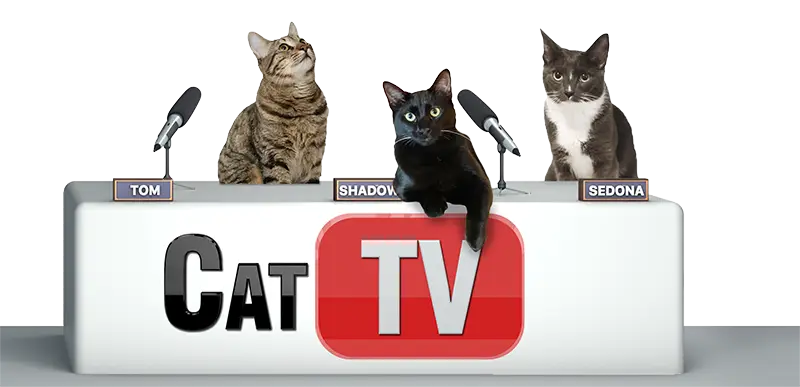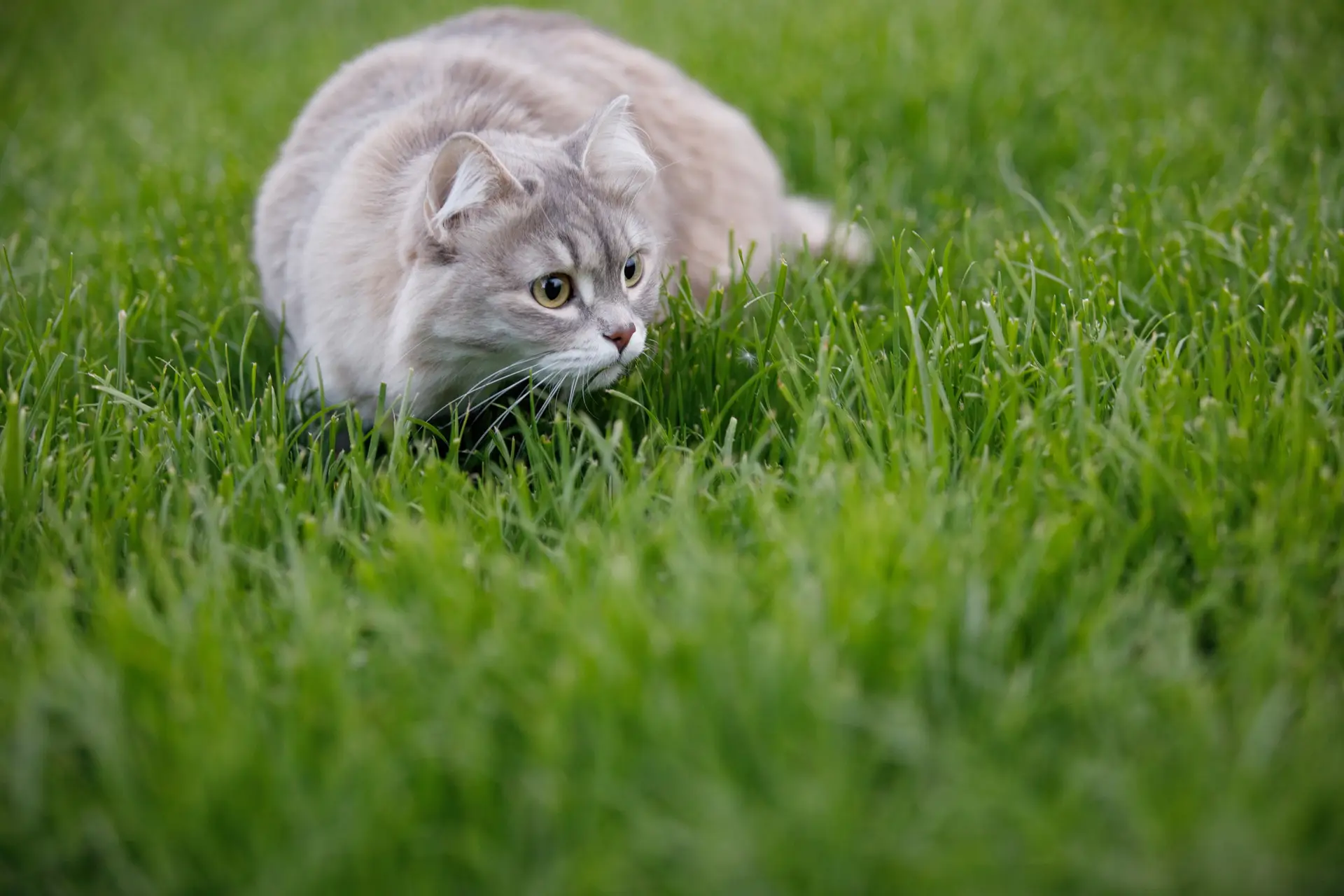Why does your well-fed feline still engage in a ‘cat hunt’? It’s instinct, not hunger, that’s at play. This article explores the natural urge to hunt in domestic cats and offers actionable ways to channel this instinct at home.
Key Takeaways
Cats’ hunting instincts come from their wild ancestors and are so strong that they hunt even when they aren’t hungry – domestication hasn’t stopped the stalk, pounce, and kill sequence.
Toying with prey isn’t just for fun; it refines cats’ hunting skills and ensures safety by tiring potential threats, plus owners can use interactive toys to satisfy these instincts indoors.
Cats are crepuscular, meaning they’re most active at dawn and dusk, following their prey’s patterns, so adjusting home routines to these times can help manage their hunting behaviors.
The Essence of the Cat Hunt: Unveiling Feline Predatory Behavior
Every cat hunt originates from a deep-rooted instinctual drive in the feline DNA. This inheritance from their wild ancestors is powerful enough to continue influencing the hunting behaviors of domestic cats, irrespective of their well-fed state. Even though our pet cats have traded the wild for the comfort of our homes, they haven’t abandoned their natural hunting strategies.
Whether it’s cat food or a mouse, the hunt is on!
The Role of Instinct in a Cat’s Hunting Habits
In terms of hunting, each cat possesses an innate blueprint from birth. This instinct, heavily influenced by their genetic makeup, establishes the foundation of their hunting habits. Different breeds have varying levels of hunting drive. As kittens, they learn to refine their hunting skills through play and practice, often starting as early as three to six months old.
The instinct to catch prey is so deeply embedded that the mere sight or sound of prey elicits an automatic response, catapulting the cat into hunting mode.
From Wild Ancestors to Indoor Cats: The Hunt Continues
Domestication may have brought cats into our homes, but it hasn’t completely tamed their wild instincts. The hunting strategies of wild and domestic cats are strikingly similar, with both engaging in a careful dance of stalking and pouncing. Indoor cats, despite the lack of real prey, continue to exhibit these hunting behaviors, often substituting toys for prey.
The drive to hunt is so potent that it largely remains unaffected by the comforts of domestic life. So, the next time your cat pounces on that toy mouse, remember that it’s just answering the call of the wild.
Decoding Cat Hunting Strategies: How Your Pet Catches Prey
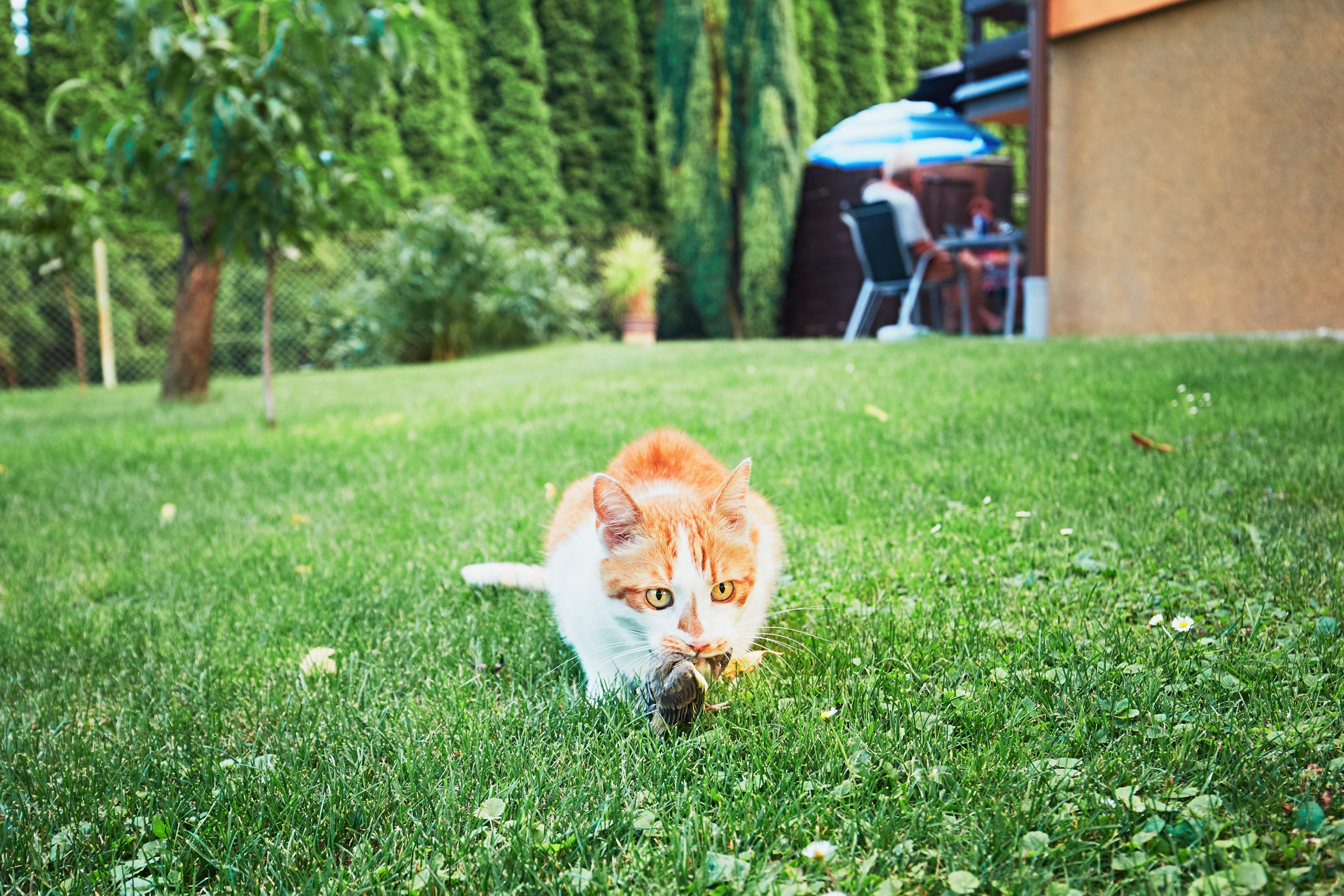
The cat’s hunting technique follows a three-stage process:
The Stalk: This involves a silent, stealthy approach towards the prey, aided by their retractable claws and camouflage fur.
The Pounce: Once the cat is close enough to the prey, it will pounce with lightning speed and precision.
The Kill: The final stage is the actual capture and killing of the prey.
Each stage of the wild cats’ hunt is a testament to a cat’s predatory prowess and agility.
The hunting stages of a cat are:
The Stalk – a slow, deliberate approach towards the prey
The Pounce – a swift, energy-saving leap towards the unsuspecting prey
The Kill – a precise bite aimed at securing the prey
In this post, we shall explore the intricacies of these hunting stages and their associated hunting behaviour.
The Stalk: A Silent Approach to Catching Prey
The Stalk is the first step in the hunting process. Cats use their retractable claws to move silently, their fur providing camouflage as they inch closer to their prey. It’s a slow dance of death as the predator closes in on its prey, every move calculated and deliberate.
The cat’s body language during this stage is a sight to behold: a low crouch, a stretched out head, and a tail that barely flickers. It’s the calm before the storm, a testament to the cat’s patience and predatory acumen.
The Pounce: Timing and Precision in Cat Hunting
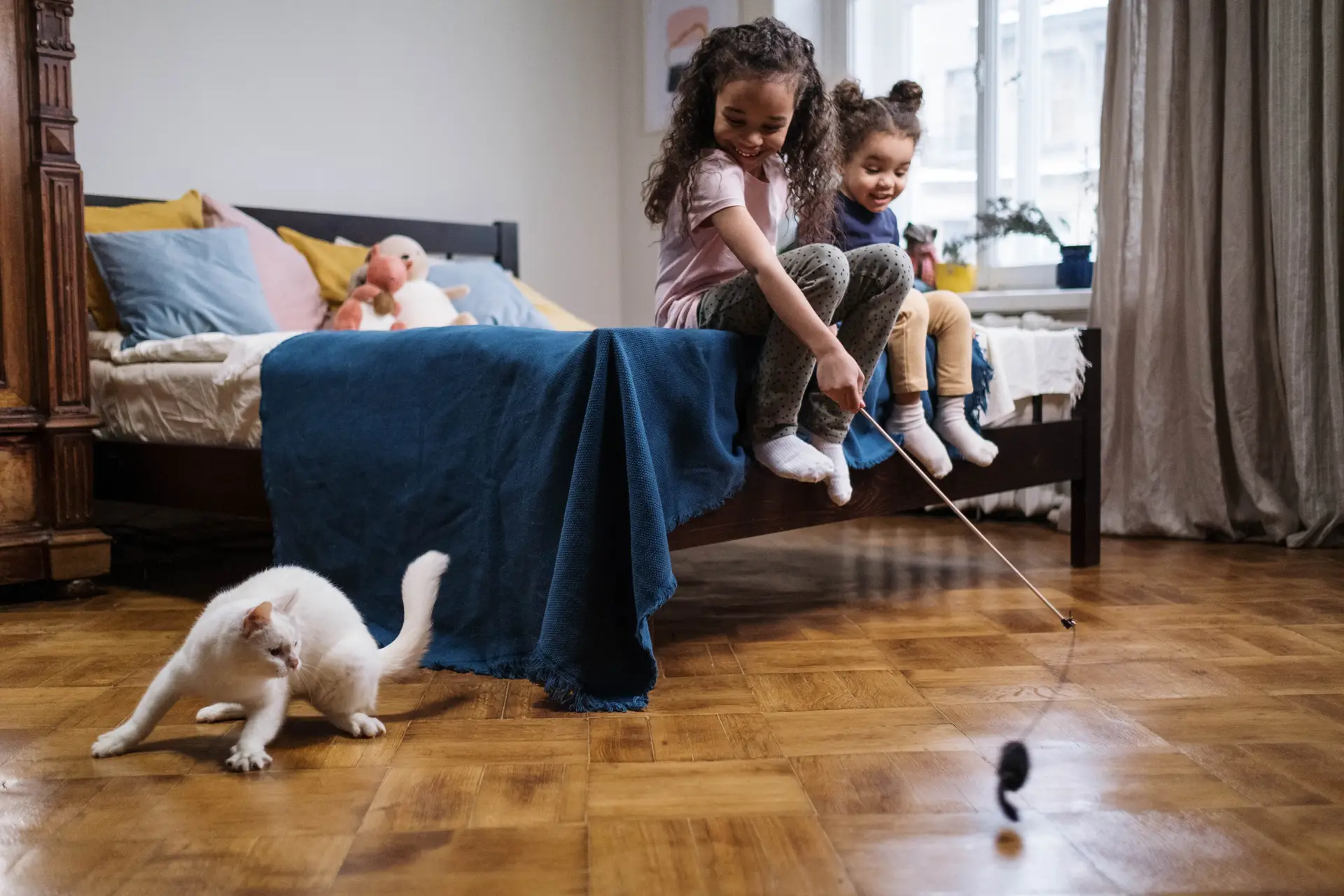
The Pounce is where the action truly begins. It’s a test of the cat’s agility and precision, and the difference between a successful catch and a missed opportunity. The pounce is characterized by a sudden, powerful leap, often preceded by a brief wiggle of the rear end. This wiggle helps the cat shift its weight and stabilize its body, ensuring a controlled and precise leap.
It’s during this stage that the cat’s remarkable coordination comes to the fore, with every muscle working in harmony to ensure a successful hunt.
The Kill: How Cats Secure Their Catch
The final stage of the hunt is The Kill. A successful kill is quick and efficient, aimed at minimizing struggle and potential injury. Cats achieve this by delivering a swift bite to the neck or spine of their prey, severing the spinal cord. Their jaws are designed to grip strongly onto their prey, and their sharp teeth can slice off pieces of meat, making them excellent predators.
It’s a grim reminder that beneath their cuddly exterior, cats are natural born killers.
When Play Meets Predation: Understanding Why Cats Toy with Their Catch
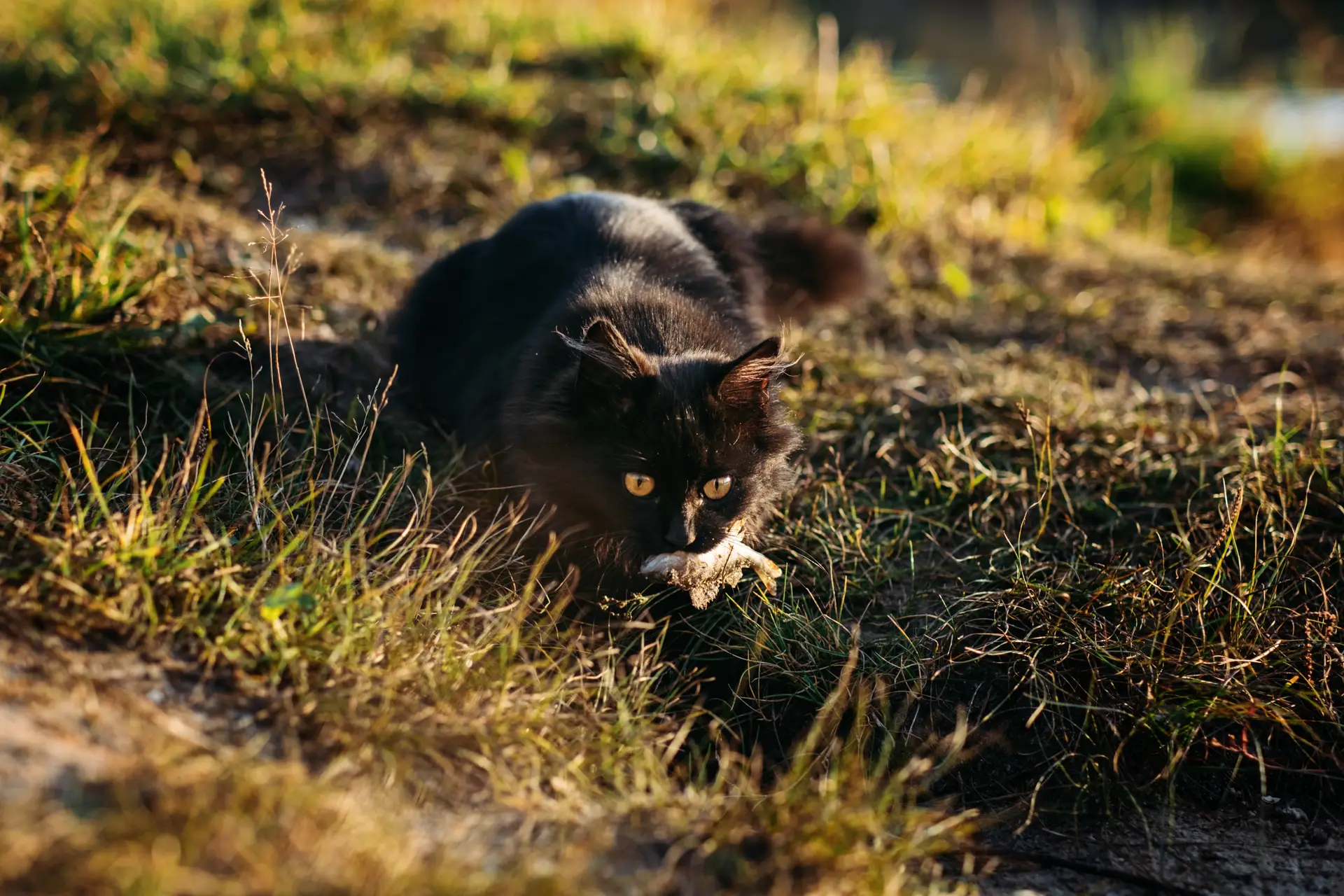
Have you ever wondered why your cat seems to ‘play’ with its catch before delivering the final blow? This seemingly cruel behavior is actually an integral part of the cat’s hunting strategy. The act of toying with their catch allows cats to practice their hunting skills and ensure their safety during the hunt.
We’ll further investigate the connection between play and hunting, and the emphasis on safety for your feline hunter.
The Link Between Play and Hunting Skills
Playtime for cats isn’t just for fun; it’s serious business. The playful antics of batting, pouncing, and using claws are actually mini hunting lessons, helping kittens develop their hunting skills. These play behaviors mimic real hunting scenarios, allowing cats to refine their:
balance
speed
coordination
sensory development
Interactive toys and games that mimic prey can provide valuable training opportunities for your cat, helping it hone its hunting prowess as cats play. Specific types of games include bird games for cats, bird tv for cats, bug game for cats, bug videos for cats and butterfly videos for cats. These all help your cat act out their natural hunting skills in a safe environment.
Safety First: Minimizing Risk While Hunting
Hunting, while instinctual, is not without risks. Cats face the possibility of injury from a struggling or defensive prey, such as their cat’s natural prey. To minimize risk, cats often toy with their prey, tiring it out before the final attack. This not only makes the prey less likely to fight back, but also allows the cat to ensure that the prey is healthy and poses no threat to them.
This safety-first approach is yet another testament to the cat’s strategic and thoughtful hunting techniques.
The Inner Workings of a Cat’s Hunting Instinct
A cat’s hunting instinct is a complex interplay of hunger, sensory triggers, and natural inclinations. While hunger can certainly influence a cat’s hunting behavior, it is not the sole driving force. A well-fed cat can still exhibit strong cat hunting behaviors, driven by its cat’s hunting instincts and the instinctual need to hunt.
Cats are also equipped with keen senses that help them detect potential prey, triggering their predatory instincts. We’ll explore how hunger and sensory triggers influence a cat’s hunting behavior.
Hunger vs. Instinct: What Drives a Cat to Hunt?
While hunger can make a cat more interested in hunting, it’s not the primary driving force behind this behavior. Cats are instinctual hunters, and this instinct can prompt them to hunt even when they’re not hungry. This constant drive to hunt, regardless of hunger, is a testament to the strong hunting instinct ingrained in every cat.
So, the next time you see your well-fed cat stalking a
, remember it’s not about hunger, it’s about instinct.
Sensory Triggers: How a Cat’s Eyes and Ears Prompt the Hunt
A cat’s hunting instinct is also greatly influenced by its sensory triggers. Their keen eyesight, adapted for low light conditions, allows them to spot potential prey even in the dark. Moreover, their sharp hearing enables them to pick up the tiniest sounds of movement, initiating the hunt.
It’s a potent combination that makes cats excellent hunters, perfectly equipped to stalk and capture their prey.
Curbing the Hunt: How Cat Owners Can Redirect Hunting Desires

While it’s fascinating to observe your cat’s hunting behaviors, it can sometimes become a cause for concern, especially if your cat has a tendency to hunt local wildlife. As a cat owner, it’s important to provide alternatives that can redirect your pet’s hunting desires, without suppressing their natural instincts. To stop cats hunting, consider engaging them in stimulating indoor activities and providing appropriate toys that mimic prey.
You can do this by offering engaging indoor activities, creating safe outdoor experiences, and even modifying their diet. We’ll discuss how you can manage your cat’s hunting instincts without repressing their natural behaviors.
Engaging Indoor Activities to Satisfy Predatory Behavior
Engaging indoor activities can go a long way in keeping your cat’s hunting desires in check. Toys that mimic prey can provide an outlet for their predatory instincts. These could include wand toys, interactive cat toys, or even puzzle feeders that require the cat to ‘hunt’ for its food.
By providing your cat with engaging activities indoors, you can help satisfy their hunting instincts while keeping local wildlife safe. Youtube videos such as Cat TV can help keep your cat engaged without going outside to hunt.
Creating Safe Outdoor Experiences
If your cat enjoys spending time outdoors, creating a safe outdoor environment can be an effective way to curb their hunting instincts. This could involve setting up a secure enclosure that allows your cat to enjoy the outdoors without posing a threat to local wildlife.
Ensuring that your cat has plenty of safe outdoor experiences can help satisfy their natural instincts without impacting the local fauna.
The Impact of Diet on Hunting Urges
Your cat’s diet can also influence their hunting behavior. A diet rich in meat can help fulfill their nutritional needs and potentially reduce their urge to hunt.
By providing a diet that mimics the protein-filled meals they would get in the wild, you can help manage their hunting desires and ensure they are well-nourished by preparing their own food.
The Social Side of Cat Hunting: Gifts or Training Lessons?
If you’ve ever been the recipient of a ‘gift’ from your cat in the form of a dead bird or mouse, you’ve experienced the social side of cat hunting. Cats may bring their catch to their owners as a sign of affection, or as a way to share their hunting prowess. Despite it not being our preferred type of gift, it unmistakably signifies the functioning of your cat’s hunting instincts.
Interpreting the Dead Animal Delivery
When your cat presents you with dead animals, it’s their way of sharing their successful hunt with you. They see you as a part of their family and are simply sharing their catch with their loved ones. While it may seem gruesome to us, for your cat, it’s a sign of affection and trust.
Teaching vs. Sharing: What is Your Cat Trying to Say?
Another interpretation of this behavior is that your cat is trying to teach you how to hunt. Cats often view their human companions as inexperienced hunters and may bring their catch as a way to share their hunting skills with you.
Hence, the next time you encounter a dead mouse on your doorstep, bear in mind: it’s not merely a gift, but an insightful hunting lesson from your feline companion.
The Twilight Hunters: Why Cats Prefer Dawn and Dusk for Hunting
Ever noticed your cat becoming more active during dawn and dusk? This is because cats are naturally crepuscular hunters, meaning they are most active during the twilight hours. These are the times when their prey is most active, giving them the best chance of a successful hunt.
Modifying home routines to coincide with these natural hunting cycles can significantly aid in controlling your cat’s hunting behavior.
Adapting to Prey Activity: The Cat’s Advantage
By hunting during dawn and dusk, cats are simply adapting to the activity patterns of their prey. The low light conditions of these times, combined with the increased activity of prey species, create the perfect hunting environment for cats.
Their exceptional night vision and heightened senses give them an advantage, allowing them to effectively stalk and capture their prey.
Adjusting Home Routines to Natural Hunting Cycles
To accommodate your cat’s natural hunting cycles, consider adjusting your home routines. This could involve feeding them small meals throughout the day, using puzzle feeders, or even adjusting your own schedule to manage their nighttime activity.
By syncing your daily routines with your cat’s natural hunting cycles, you can help support their instincts while preventing unwanted hunting behavior.
The Longevity of the Hunt: Do Older Cats Still Pursue Prey?
As cats age, their hunting behavior may undergo changes. Some older cats may continue to hunt, driven by the same instincts that guided them in their youth. However, their hunting abilities may decline due to age-related physical changes and reduced agility.
Familiarizing oneself with these changes can aid in managing the hunting behavior of your senior cat and guarantee their health and activity in their twilight years.
Age and Agility: How Senior Cats Approach the Hunt
Senior cats, while still possessing the instinct to hunt, may approach the process differently than their younger counterparts. Age-related changes such as loss of muscle, strength, and flexibility may make hunting a more challenging endeavor. However, they may adapt by using their hearing and eyesight more effectively, going for smaller prey, and getting closer to their target before initiating the hunt.
Knowing When to Retire: Signs Your Cat May Be Slowing Down
Recognizing the signs of aging can help you understand when your cat may be ready to retire from hunting. These signs can include decreased mobility, changes in appetite, and increased sleep, among others.
Paying attention to these changes can help you provide appropriate care for your senior cat, ensuring that they remain healthy and comfortable as they navigate their golden years.
Summary
In this blog post, we’ve explored the fascinating world of cat hunting, delving into the instincts, strategies, and behaviors that make cats adept hunters. We’ve looked at how these instincts continue to drive domestic cats to hunt, despite living in the comfort of our homes. We’ve discussed the role of play in honing hunting skills, how hunger and sensory triggers influence hunting behavior, and how cat owners can redirect hunting desires. We’ve also touched upon the social aspect of cat hunting and the adaptations that make cats effective twilight hunters. Finally, we’ve considered how aging can affect a cat’s hunting behavior, and signs that your senior cat may be ready to retire from the hunt. As we conclude, it’s clear that whether young or old, well-fed or hungry, cats are, at their core, natural hunters. So, the next time your cat pounces on that toy mouse, remember: it’s not just play, it’s a manifestation of their wild instincts.
Frequently Asked Questions
What does a cat hunt?
Cats hunt small mammals, birds, and sometimes rabbits. They need to make several kills throughout the day to meet their energy requirements.
Is it okay to let your cat hunt?
No, it is not okay to let your cat hunt. Allowing them to hunt can put them at risk of acquiring diseases from their prey and getting injured, which can lead to serious infections.
Will a well-fed cat still hunt?
Yes, even if a cat is well-fed, it will still hunt because hunting is not solely motivated by hunger, but also by the excitement and reward of the activity.
How can I redirect my cat’s hunting instincts?
You can redirect your cat’s hunting instincts by engaging them in indoor activities, creating a safe outdoor environment, and providing a balanced diet. Interactive toys, puzzle feeders, and a meat-rich diet can help curb your cat’s hunting desires.
